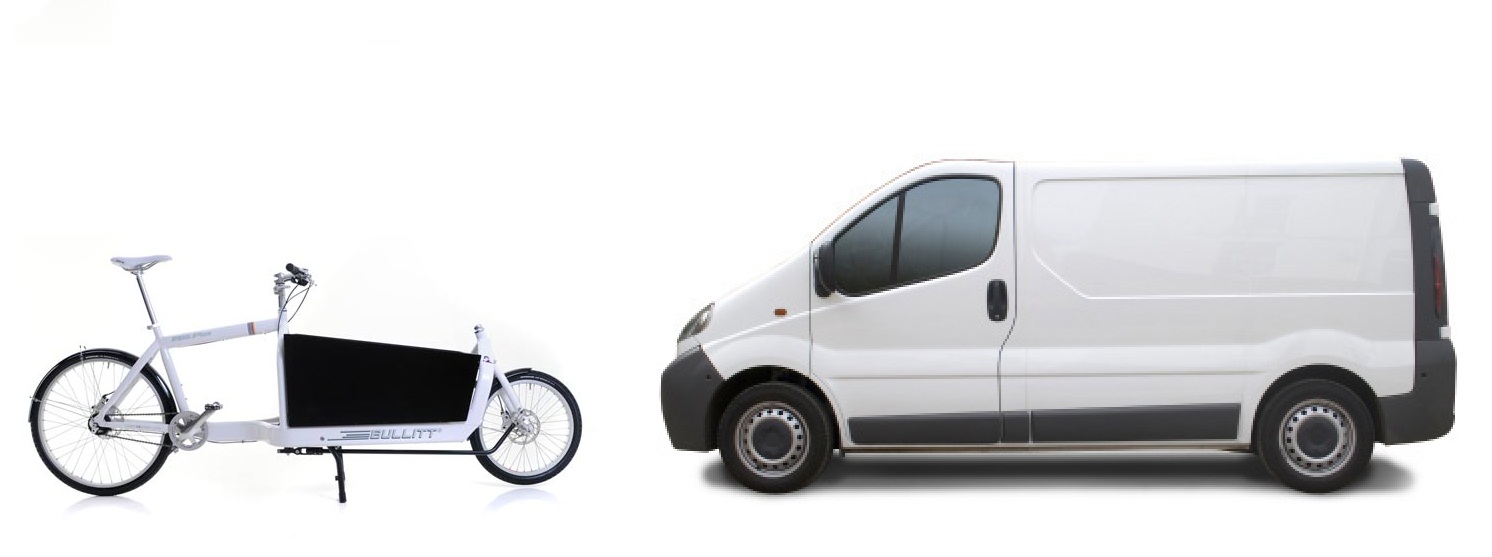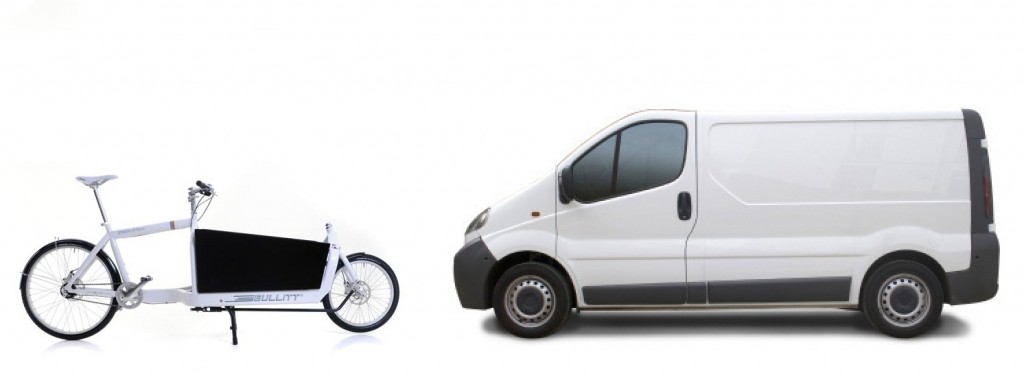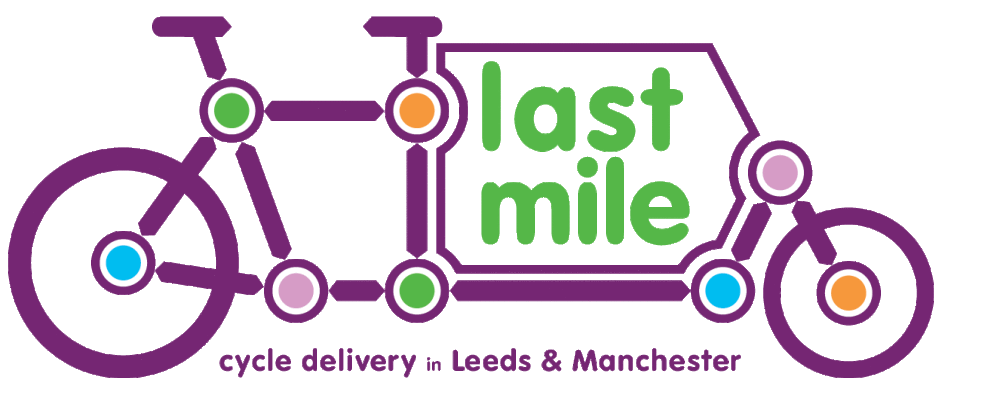
Cycle Couriers vs. Van Couriers: Pros and Cons of a cargo bike
 If Last Mile Leeds are to make cargo bikes the delivery method of choice for Leeds city centre deliveries we must reinvent the cycle courier as a realistic alternative to the van courier.
If Last Mile Leeds are to make cargo bikes the delivery method of choice for Leeds city centre deliveries we must reinvent the cycle courier as a realistic alternative to the van courier.
To this end, I spent two days with a van courier for one of the big international courier firms this week. It was a great insight into the challenges of their job, and the constraints they work under and has helped me to identify the advantages (and some disadvantages) a cycle courier riding a large capacity cargo bike would have over the driver of a traditional transit van.
Advantages of Cargo Bikes
- The large majority of deliveries we completed could have been carried easily in a cargo bike. Indeed I would suggest that our cargo bikes could have carried 80% of the deliveries we made at one time.
- Delivery deadlines and pickups which cannot be made before a certain time, mean that delivery routes must double back and couriers may on occasion visit the same customer twice in a single day. Bikes are better able to negotiate the leeds city centre, against the clockwise traffic flow of the city centre loop.
- The pedestrian precinct is off-limits to motor vehicles between 10.30am and 4.30pm. Not so for bikes which can be wheeled to any premises, even within the covered quarters.
- Parking. Even when access is straightforward, vans must spend time parking, maneuvering and turning and they often park some distance from the reception or delivery entrance. Bikes are able to pull up right outside, and pull away just as quickly without obstructing clients or customers.
- In Leeds city centre deliveries were rarely further than ½ a mile apart. Vans offered no advantages in terms of shorter journey times, even when traffic or one-way streets allowed.
- Cargo bikes can operate efficiently from city centre locations. If our cargo bikes must return to our depot to pick up additional deliveries (either newly arrived or beyond their capacity) this is a short trip – all the shorter for a bike. Vans are typically away from the depot for the duration of the day.
Disadvantages of Cargo Bikes
- About 20% of our deliveries or collections were either beyond the capacity of a cargo bike, or if carried would limit the ability of the bike to carry other deliveries.
- Customers (even regular customers) are not predictable. One day they may have a single envelope and the next 20 large boxes— the former easily delivered by bike the latter would require a van. This means that where this unpredictability exists, a bike can only supplement a van, rather than replace it.
- This is particularly the case when collecting from customers, as such pickups rarely give an indication of volume. Therefore the ability of a bike to collect may not be confirmed until actually in front of the customer.
Cargo bikes clearly have their place, but are limited by their capacity. Large capacity cargo trikes, such as the Cycle Maximus, do exist that would accommodate loads equal to a small van, but these would lose some of the maneuverability of a two-wheeler and are usually required to operate as part of a mixed fleet. Such bikes are on our horizon, but as yet are not an imminent purchase.
